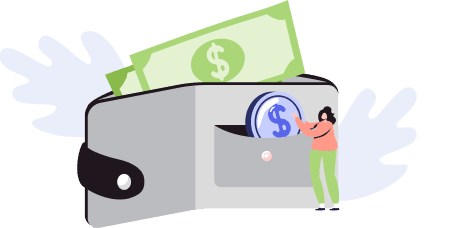
Period costs appear in the income statement as operating expenses, including selling, general, and administrative (SG&A) expenses. These are deducted from gross profit to calculate operating income, a critical metric for evaluating a company’s cost structure. High fixed period costs can cause significant fluctuations in net income with changes in sales volume, underscoring the importance of cost management. Period costs are not assigned to one particular product or the cost of inventory like product costs. Therefore, period costs are listed as an expense in the accounting period in which they occurred. Every cost incurred by a business can be classified as either a period cost or a product cost.

Period Costs
Investing in nutritional technologies to mitigate ketosis and hypocalcemia can yield high returns. Strategies such as rumen-protected methyl donors and nutritional technologies that enhance insulin sensitivity can help manage ketosis, while -DCAD and binding programs can effectively prevent hypocalcemia. However, before fine-tuning transition nutrition programs to minimize the risk of ketosis or hypocalcemia, the basics around environment and management need to be met first to ensure the success of any nutrition interventions. Research and development (R&D) costs are also period costs, particularly for innovation-driven businesses. These include salaries for research staff, experimental materials, and patent application fees.
- Product costs are recorded in the cost of goods sold (COGS) and directly affect the gross profit margin, a key measure of operational efficiency.
- When the product is manufactured and then sold a corresponding amount from the inventory account will be moved to the income statement.
- Dairy cows are at greatest risk of developing diseases leading to involuntary culling during this time.
- For example, a single-shift operation might require only one departmental supervisor, but the operation of a second shift will require a second supervisor.
- If you manufacture a product, these costs would include direct materials and labor along with manufacturing overhead.
Date: 22-23 Mar 2025 Time: 8:30-11:30 AM EST Venue: OnlineInstructor: Dheeraj Vaidya, CFA, FRM
The management accountant must carefully evaluate the time expenditure to see if it will be included in the income statement. Also, fixed and variable costs may be calculated differently at different phases in a business’s life cycle or accounting year. Coffee Shop Accounting Whether the calculation is for forecasting or reporting affects the appropriate methodology as well.
AccountingTools
In industries like pharmaceuticals and technology, R&D can represent a significant portion of total period costs, emphasizing the role of innovation. For a retailer, the product costs would include the supplies purchased from a supplier and any other costs involved in bringing their goods to market. In short, any costs incurred in the process of acquiring or manufacturing a product are considered product costs.

Some examples include period costs General administration costs, sales clerk salary, depreciation of office facilities, etc. Classifying product and period costs on financial statements is crucial for illustrating a company’s financial health. Product costs are recorded in the cost of goods sold (COGS) and directly affect the gross profit margin, a key measure of operational efficiency. Accurate allocation and reporting of these costs are governed by standards like the International Financial Reporting Standards (IFRS) and Generally Accepted Accounting Principles (GAAP), ensuring consistency across financial statements. Understanding the distinction between product and period costs is essential for businesses aiming to optimize their financial strategies.
Examples
Understanding the longevity of cows in the herd and the lactation distribution of your herd is a key part of designing transition program strategies. In Figure 1, looking at a variety of herds across Canada, the percentage of animals in the third-plus lactation is 42%, falling short of the benchmark set by the top herds of 55%. From an economic perspective, in those same herds, the mature cows in the third-plus lactation generate an additional $2,100 of milk revenue per lactation. That additional revenue justifies investigating further what longevity looks like across herds for those mature cows. Managing cows correctly during the transition period is one of the most important factors for overall farm success. During the transition period, nutrient requirements change to support fetal growth, colostrogenesis and the onset of lactation following parturition.
What are Period Costs?
The cash may actually be spent on an item that will be incurred later, like insurance. It is important to understand through the accrual method of accounting, that expenses and income should be recognized when incurred, not necessarily when they are paid or cash received. Period costs are not tied to production but are essential for business operations. These are expensed in the period incurred, affecting profitability within that timeframe. Selling expenses, a key category, include costs related to product promotion and sales, such as advertising, sales commissions, and distribution.

- Also termed as period expenses, time costs, capacity costs, etc these are apportioned as expenses against the revenue for the given tenure.
- It is important to understand through the accrual method of accounting, that expenses and income should be recognized when incurred, not necessarily when they are paid or cash received.
- These include salaries for research staff, experimental materials, and patent application fees.
- As a general rule, costs are recognized as expenses on the income statement in the period that the benefit was derived from the cost.
- SG&A includes costs of the corporate office, selling, marketing, and the overall administration of company business.
- Administrative expenses cover general operational costs, such as executive salaries, office supplies, and utilities for non-manufacturing facilities.
The accrual for a particular accounting period, the duration that has passed and necessitated being charged to the profit and loss account, and the revenue for which they QuickBooks are incurred are the three factors determining time costs reporting. Fixed costs remain constant for a given tenure, irrespective of the level of output. Generally, fixed cost consists of fixed production overhead and Administration Overhead.
